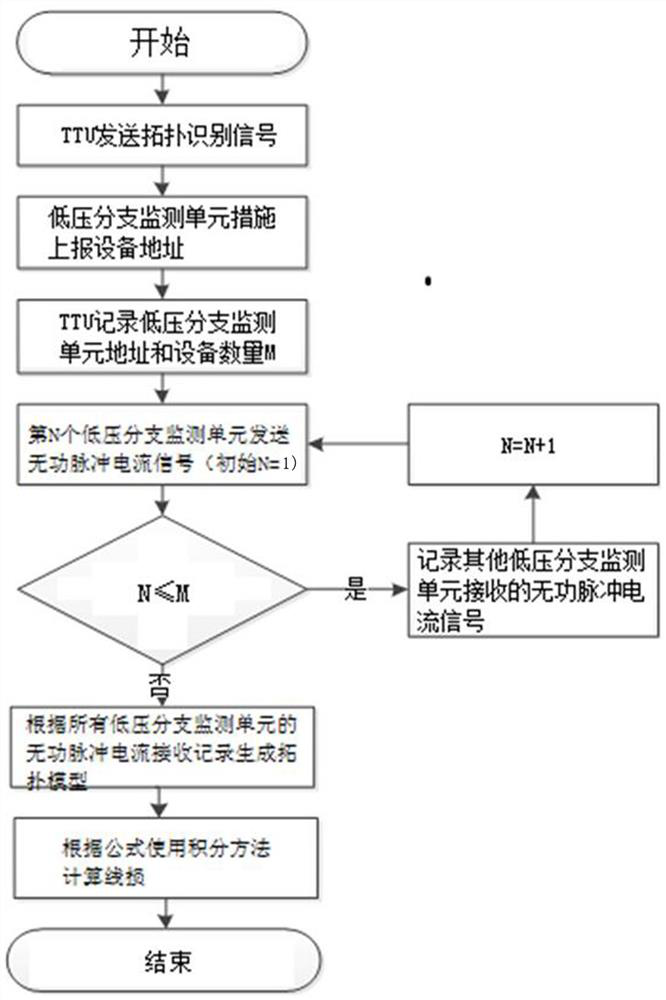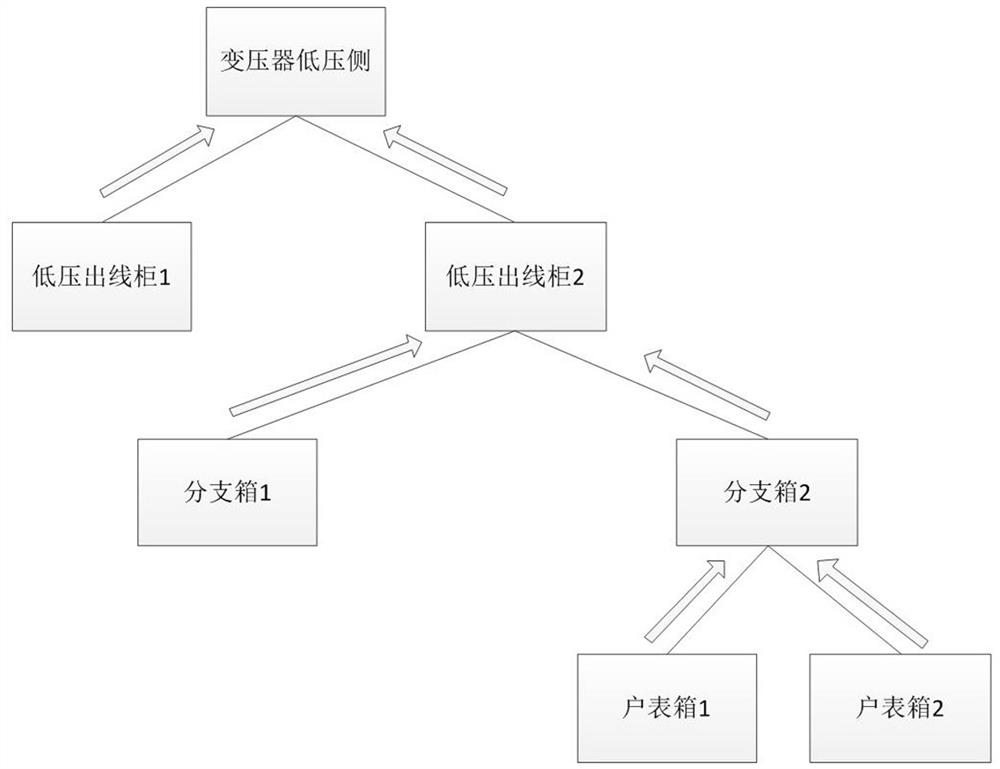An automatic topology line loss analysis method based on the Internet of Things in the station area
An analysis method and topology line technology, applied in the direction of AC network circuits, sustainable buildings, instruments, etc., can solve the problems of lack of systematic standards, reduce enterprise work efficiency, and low precision, so as to reduce redundant work and realize line Loss calculation, the effect of improving work efficiency
- Summary
- Abstract
- Description
- Claims
- Application Information
AI Technical Summary
Problems solved by technology
Method used
Image
Examples
Embodiment 1
[0024] This embodiment discloses an automatic topology line loss analysis system based on the Internet of Things, such as figure 1 As shown, including intelligent distribution transformer terminal and low-voltage branch monitoring unit. The intelligent distribution transformer terminal is arranged on the low-voltage outgoing line side of the transformer in the power distribution room, and the low-voltage branch monitoring unit is installed at each branch of the low-voltage outgoing line cabinet, branch box, and household meter box in the station area. The low-voltage outgoing line cabinet belongs to the first-level topology, and the branch box belongs to In the second-level topology, the household meter box belongs to the third-level topology.
[0025] The intelligent distribution transformer terminal (TUU) includes a pulse signal transceiver unit, an electrical information collection unit, and an edge computing unit. The pulse signal transceiver unit can send and receive puls...
Embodiment 2
[0033] This embodiment discloses an automatic topology line loss analysis method based on the Internet of Things. This method is based on the system described in the embodiment, such as figure 2 shown, including the following steps:
[0034] S01), the TTU uses the broadband carrier technology to send the monitoring signal of the low-voltage branch monitoring unit through the CoAP protocol. After receiving the signal, the low-voltage branch monitoring unit successfully establishes communication with the TTU and registers the device;
[0035] S02), TTU counts the number of registered low-voltage branch monitoring units, a total of M, and marks them separately;
[0036] S03), the low-voltage branch monitoring units from No. 1 to No. M respectively send reactive pulse current signals sequentially. Other low-voltage branch monitoring units record according to whether they receive reactive pulse current signals;
[0037] S04), the intelligent distribution transformer terminal dete...
PUM
 Login to View More
Login to View More Abstract
Description
Claims
Application Information
 Login to View More
Login to View More - R&D
- Intellectual Property
- Life Sciences
- Materials
- Tech Scout
- Unparalleled Data Quality
- Higher Quality Content
- 60% Fewer Hallucinations
Browse by: Latest US Patents, China's latest patents, Technical Efficacy Thesaurus, Application Domain, Technology Topic, Popular Technical Reports.
© 2025 PatSnap. All rights reserved.Legal|Privacy policy|Modern Slavery Act Transparency Statement|Sitemap|About US| Contact US: help@patsnap.com



